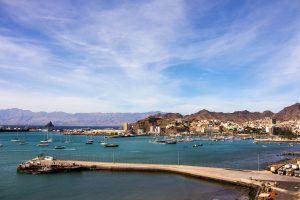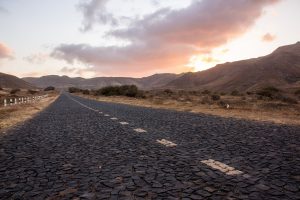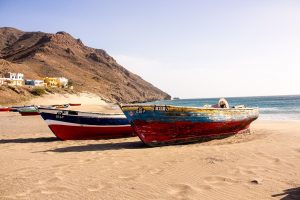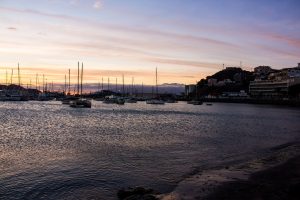The fantastic subtropical climate of São Vicente
The island of São Vicente is one of the ten islands that form the Republic of Cape Verde. The island's capital Mindelo is the centre of Cape Verdean Carnival celebrations. São Vicente is also known for the excellent conditions for kitesurfing and windsurfing. The subtropical climate is one of the other distinctive advantages of this island.
The climate of São Vicente
São Vicente has a dry and mild tropical climate, which is very rare. These distinctive climate conditions are caused by the position of the island far away from the West African coast, and can also be related to the cold Canary Current that passes the island. Despite the dry conditions on the island, there still are two seasons on São Vicente: the rainy season from August through November is slightly wetter and a bit warmer than the dry, windy and relative cool season from December through July. As the island is located close to the equator, the differences between seasons is not nearly as big as in countries in Northern and Western Europe.
Best time to visit São Vicente
The best time to visit the island is the dry season, so roughly from October to June. In October and November there is the chance of an odd shower, and from June on the temperatures start to rise. If you want to enjoy real local folklore visit São Vicente in February or March, when Carnival is celebrated on the island.
The temperatures on São Vicente
The air temperature on São Vicente is very stable throughout the year. It ranges from around 25 degrees Centigrade from December through May, to 27 to 30 degrees Centigrade from June to November. This means that temperatures on the island are comparable to those on the Canary Islands (even two degrees higher in the winter). The constant temperature of the ocean surrounding the island ranges from 22 degrees Centigrade to 25 degrees Centigrade.
Average rainfall on São Vicente
It does not rain much on São Vicente. The average rainfall is limited to 100 to 200 millimetres per year. Only on the higher peaks, like Monte Verde mountains, the amount of rainfall is a bit higher. The majority of this rain falls in August, September and October. In August and October there is chance of some rain, but no more than a couple of millimetres per day. In December and March the sun can sometimes be hidden by dust clouds.




